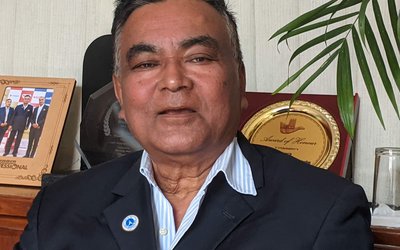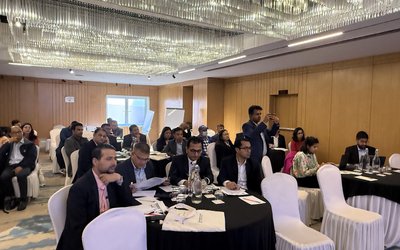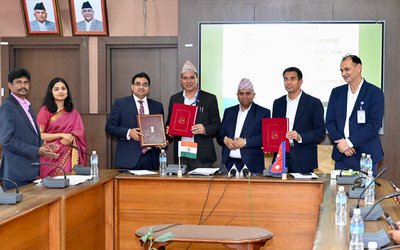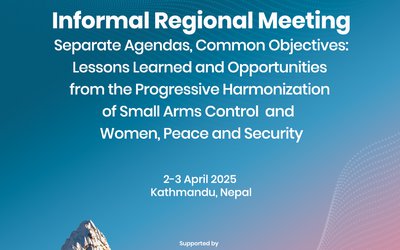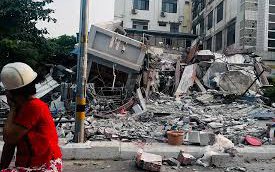
What is the state of the work in constituency delineation?
We are almost close to submitting the report. If things go the right way, we will submit the report within a week.
Why was it delayed?
It was delayed because at the final stage of the work, the Supreme Court’s verdict came and the government decided to increase the number of local bodies. We consulted with the cabinet and we are now working on No. 2 province. Eight new local bodies have increased, with changes in the boundary.
It is unfortunate that we did not find any previous record of delineation of constituencies for 205 and 240. We did not find the documents. We finally consulted the persons who were involved in the process.
We are now working on 8 districts of 2 provinces. We have already completed the delineation of other constituencies. Our work is very important and the issue is pertinent because our report will be the base to hold the elections.
As everyone is waiting to see the report of the Delineation Commission, when are you submitting your report?
We should have already submitted our report. Nepal government set up our commission, giving us 21 days for submission of the report. The commission was constituted under a decision of July 20. The commission was constituted under the article 286 of Constitution of Nepal. The commission is led by a person who is qualified for the post of the Supreme Court Justice. Members include a geographer, sociologist, surveyor and administration expert. Secretary of the government of Nepal is a member secretary. As Constitution envisioned five members in the commission, this was constituted under a cabinet decision of July 19.
When did you start the work formally?
We received the appointment letter on 23 July and started work, beginning with the search for a place for our secretariat. Our chairman took an oath of office from Chief Justice and we all took our oath of office from the chairman in front of Chief Justice. I myself chose the current space inside Singha Durbar. We managed logistics and started work on July 23. Cabinet Secretariat and Ministry of Home Affairs provided us the necessary logistics. In the first three days 23, 24 and 25, we formulated working procedures. We had to start the work from zero.
How are you delineating the constituencies?
Article 286 has a provision for constitution of commission and its function and constitutional mandate. There are laws as well. Before we started work, we discussed the matter intensively and our meeting was held on July 26. We also passed the working modality and procedure. Once we passed the working procedure, we formulated the working plan. This included how to submit the report and how to enter into election delineation.
When did the commission start its function?
Formally, the commission started to function from July 26. The working procedure was made as per the cabinet decision, which said the commission can formulate its working procedure on its own. The tenure of the commission was 21 days from the start of its work. Our tenure was completed on August 15 and then it was extended for another three weeks.
What did you study?
First, we studied the constitution and clauses that relate to our work. The articles 84,176, 56.3, 286.5 and 286.6 and other articles are related to article and sub articles 286.These articles are directly related to our commission. The article 286.5 is very important in the amendment of this Constitution. The article 286.5 has clearly mentioned that population is the main criterion of delineation followed by geography. The sub-clause 6 has some special interpretation, which includes geographical and cultural things, social and transportation, administrative facilities. The sub-clause 5 has clear interpretation on how to delineate the constituency. It says that population is the main criteria for delineation of constituencies. The amendment has clearly mentioned our criteria for delineation of constituencies in province and center and it should be done under the province basis, Constituent Delineation Commission Act 2073. Our move was as per these two provisions.
Have you issued the public call?
We issued a public notice asking for suggestions to delineate 165 for House of Representative and 330 for provincial parliament. We had to delineate a total 495 constituencies. We received a lot of suggestions through email, fax, and letter, as well as fast, telephone and direct meetings.
Have you held meetings in the districts?
As our time was short, we could not have visited all 75 districts. We decided to interact with the people in various districts with a high density of population. We have consulted with the people in 8 different places including Kathmandu, Biratnagar and other cities. Members of our commission were themselves involved in all these interactions.
Were there confusions in constitution and laws?
The article 56.3 of the Constitution creates a bit of confusion as the clause says the numbers of districts. However, Annex 7 of the Constitution has 77 districts. We also discussed the issue with constitutional experts, lawyers, members of parliament and other experts. Demographers, sociologists, and anthropologists also discussed the matter with us. We also discussed the matter with leaders of main parties. They gave us clear guidelines. As they are main forces of the elections, their guidelines were important for us.
- IME GROUP: Expands Into Paper Industry
- Mar 24, 2025
- CPN UML: Instigated By India
- Mar 23, 2025
- ADB’S CHIEF ECONOMIST: Nepal Reduces Poverty
- Mar 11, 2025
- FM DR. DEUBA: A Successful Visit
- Mar 11, 2025
- MD GHISING: Target Of Personal Grudge
- Mar 09, 2025





